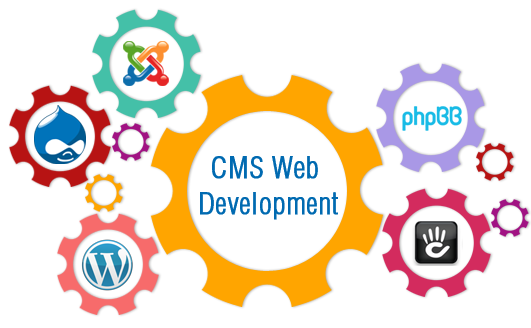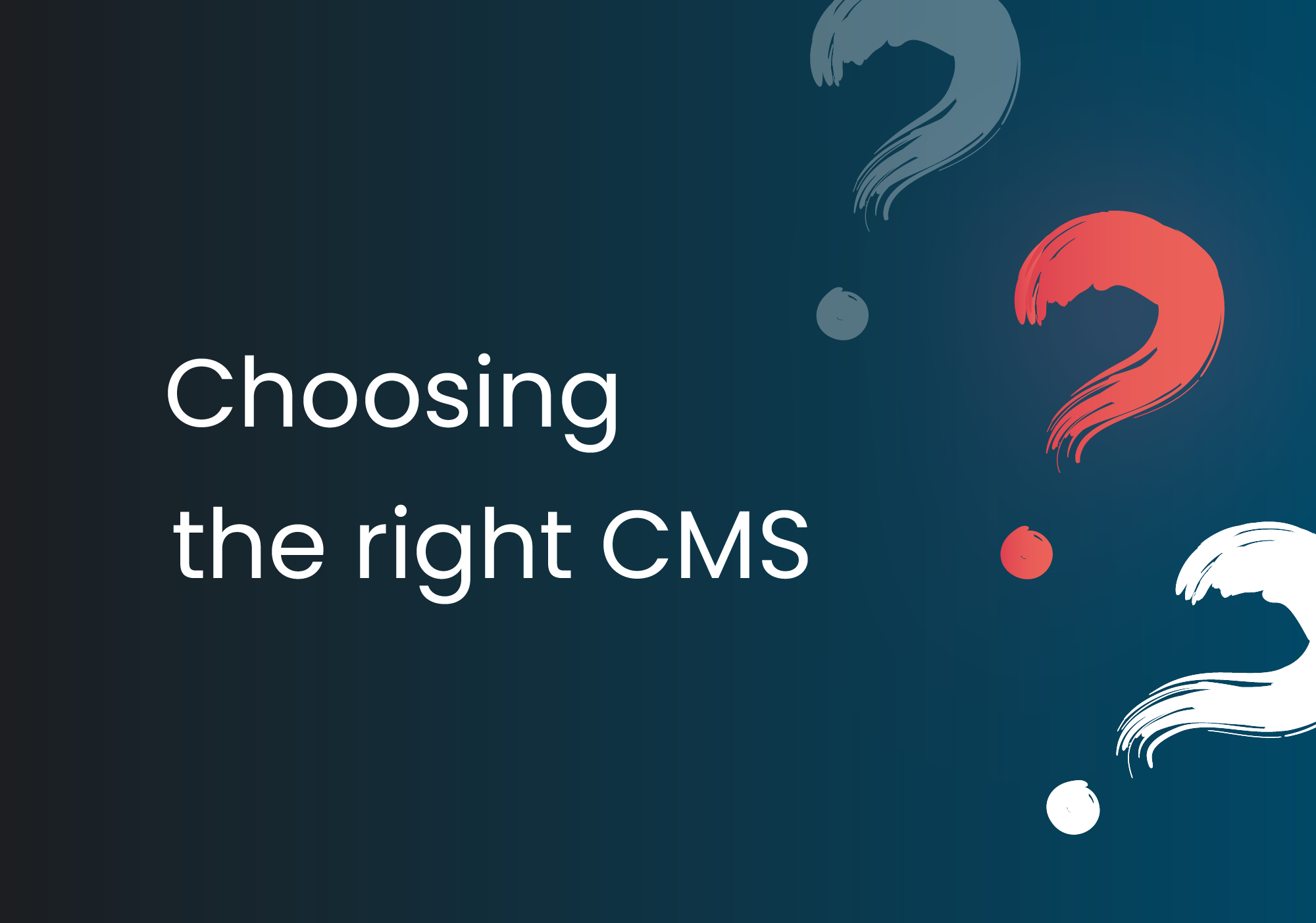weblim
April 29, 2025

Building a website is easier than ever—until it’s time to choose the right CMS.
Most business owners get stuck at this very step.
You search online and find names like WordPress, Shopify, Webflow, Wix… and suddenly, you’re overwhelmed.
Which CMS is best for your business?
Which one is easy to use?
Which one won’t cost you too much time or money later?
The truth is, choosing the wrong CMS can slow down your business, hurt your SEO, and even force you to rebuild your website from scratch.
But here’s the good news:
In this guide, you’ll learn exactly how to choose the right CMS for your website—based on your needs, your goals, and your future plans.
We’ll show you:
-What a CMS really is (in simple words)
-The 10 most popular CMS platforms and what each one is best for
-Which CMS tools we recommend based on real client experience
If you’re planning to build a new website, redesign an old one, or just want to understand your options, this blog post will help you make the right choice.
A CMS stands for Content Management System.
It is a tool or software that helps you build and manage your website — without writing code.
You don’t need to know how to program.
You don’t need to hire a web developer for every small change.
With a CMS, you can:
Add or edit text on your website
Upload images or videos
Publish blog posts
Create new pages
Change your layout or design
And even sell products online
All from a simple dashboard — like logging into Facebook or Gmail.
Let’s say you run a small clinic.
You want a website where people can:
See your services
Read your blog posts
Fill out an appointment form
With a CMS like WordPress, you can do all of that — and more — without calling a developer every time.
That’s the power of a CMS.
It puts control back in your hands.
Your website is the face of your business online.
But if you can’t update it quickly, fix issues, or grow it when your business grows — it becomes a problem.
A good CMS helps you:
Save time
Save money
Make updates easily
Rank better on Google (SEO)
Stay in control of your content

Before choosing a CMS, answer these:
Who will use the site?
Just you? A small team? Are you good with computers?
What type of site do you want?
A blog? A shop? A service website?
Do you want to grow the site later?
Will you need more pages, more users, or more features?
What is your budget?
Some CMS platforms are free. Others charge monthly.
Do you want it easy or flexible?
Easy platforms save time. Flexible platforms give you more control.

There are many CMS platforms out there.
Each one is built with different users in mind.
To help you understand better, we have divided the most popular CMS tools into
3 simple groups:
CMS platforms that are easy to use
CMS platforms for business growth
CMS platforms made for online shops
Let’s look at each group in more detail.
These CMS platforms are perfect if you want to build a basic website quickly.
They are easy to use, with drag-and-drop features. No coding needed.
You can build a personal blog, a small business website, or a portfolio — even if you have no tech skills at all.
Wix – Very beginner-friendly. You can choose a template and just drag elements (like images, buttons, and text) into place. Great for small service businesses.
Squarespace – Also easy, but with more polished and stylish design options. Many photographers and creatives love it.
Weebly – A simple tool that works for basic websites and small shops. It’s not as modern as the others, but still useful.
Very easy to learn
Quick setup
Hosting is included
Good for small websites
Limited features for big projects
Less flexible for SEO or customization
Hard to move your site to another CMS later
Local businesses
Personal portfolios
One-page websites
Non-technical users
If you plan to grow your website over time, add more features, get more traffic, or expand your services, you need a CMS that’s flexible and scalable.
These platforms give you more control, more plugins, and better SEO tools.
They may need a little more learning at first, but they’re worth it in the long run.
WordPress – The most popular CMS in the world. You can build almost anything: blogs, business websites, online stores, and even schools. It’s free to use, and there are thousands of plugins to add features.
Webflow – Great for designers. You get full control over layout, style, and animations. Very professional results, but it takes time to learn.
Joomla – More structured and powerful than basic CMS tools. It’s good for sites that need user logins, memberships, or different content types.
Very customizable
Great SEO tools
Many plugins and themes available
Good for growing businesses
Slightly harder to learn
Needs regular updates and maintenance
You need to buy hosting separately (for WordPress or Joomla)
Service businesses
Agencies
News websites
Schools or training platforms
Startups that want to grow fast
If your main goal is to sell products or services online, you need a CMS that is built for e-commerce.
These platforms have everything ready: product pages, shopping cart, payments, shipping tools, and more.
Shopify – One of the best e-commerce platforms. It’s made for selling online. Easy to use, very secure, and has built-in payment tools. Great for beginners and serious sellers.
WooCommerce (used with WordPress) – If you want a mix of blog + shop, this is a great option. It gives you full control but takes more setup.
Squarespace Commerce – Works like Squarespace, but with added shopping features. Best for small shops with few products.
Easy to manage products and orders
Secure payment options
Mobile-friendly
Designed for online selling
Monthly fees (for Shopify and Squarespace)
May need extra plugins for advanced features
You need good product photos and descriptions to make sales
Clothing and fashion shops
Beauty and skincare brands
Food delivery businesses
Anyone who wants to run an online store
Some CMS tools are not made for beginners, they are built for developers or very specific needs.
Grav – A flat-file CMS that is super fast. It does not use a traditional database. Best for developers who want speed and control.
Drupal – A powerful CMS used by large companies, universities, and even governments. It is flexible but hard to use without technical skills.
Developers
Large organizations
Government portals
Custom systems
A client came to us with a Wix website. It looked nice, but it was very slow. Google didn’t like it. People stopped visiting.
We moved them to WordPress. The site became faster. Their Google rank improved. Now, they get more customers.
Lesson: Looking good is not enough. You need the right CMS behind it.

Choosing a CMS is a big decision.
It’s not about picking the most popular name, it’s about picking what works best for you.
Don’t let trends or big brand names decide for you.
Instead, think about:
Your goals — What do you want your website to do?
Your skills — Will you manage the site yourself, or do you need help?
Your budget — How much can you spend now and later?
Your future — Will your business grow? Will your website need more features?
A good CMS should grow with you, not hold you back.
And if you’re not sure what to choose, don’t worry, you don’t have to do it alone.
At Weblim, we’ve helped many businesses pick the right CMS for their websites.
We look at your needs, explain your options in plain English, and help you build something that lasts.
At Weblim, we help you make smart website decisions.
We don’t just build sites—we help you grow your business.

2025 Weblim | All rights reserved | Terms & Conditions | Privacy Policy | Refund Policy